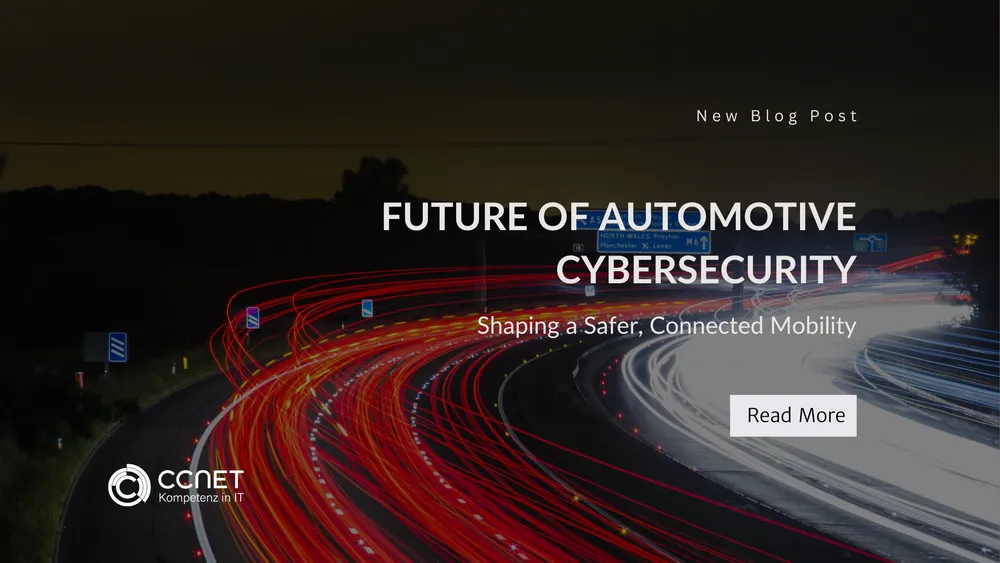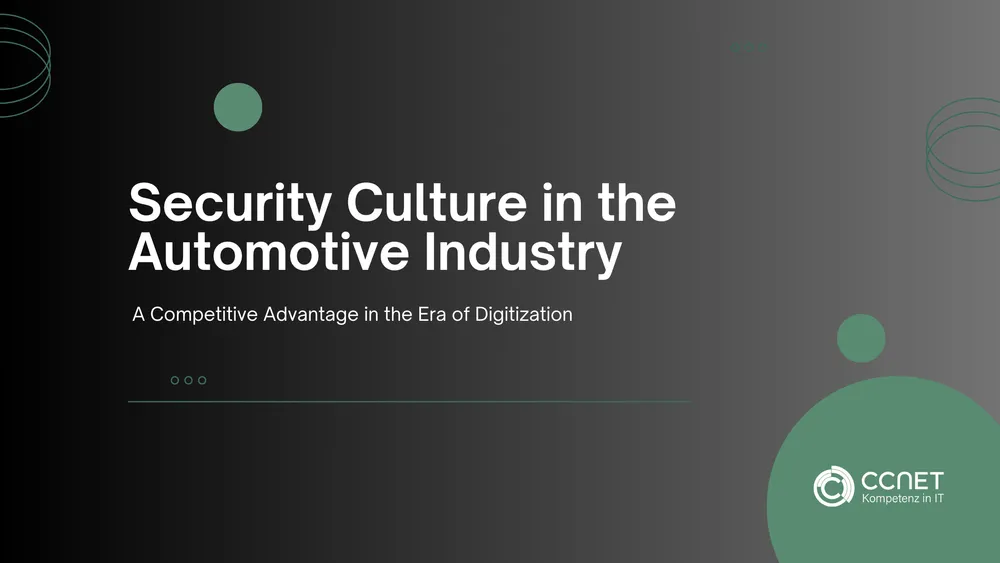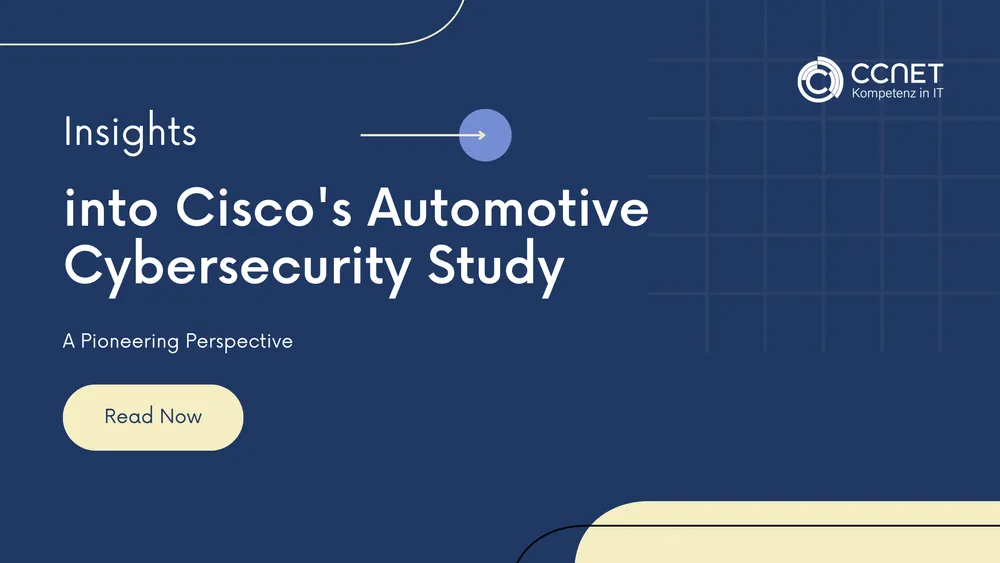
CCNet
Aug 9, 2024 • 3 min read

Security in Connected Vehicles: The New Normal?
Technology has transformed the automobile into more than just a mode of transportation. It is a connected device built on the principle of constant connectivity. The rapid advancement of connected vehicles has revolutionized driving by enhancing comfort and efficiency. However, this progressiveness also brings forth new challenges, particularly concerning cybersecurity. Cisco's recent study on Automotive Cybersecurity sheds much-needed light on the importance of advanced security measures to mitigate the risks associated with the increasing connectivity of our vehicles.
The Significance of Cybersecurity in Connected Vehicles
With every connected vehicle hitting the roads, the surface for potential cyberattacks expands. Cars, once isolated units, are now part of an extensive network exchanging data in real-time. These data, ranging from location information to drivers' personal preferences, render connected vehicles an attractive target for cybercriminals. It's not just about stealing sensitive information; the threat also encompasses the physical safety of occupants. A successful breach could seize control of the vehicle, with potentially catastrophic consequences.
The 4C of Automotive Cybersecurity
To tackle these challenges, the Cisco study introduces the "4C" model, serving as a guide for developing robust security strategies in the automotive sector. This model emphasizes the importance of Competencies, Collaborations, Culture & Organization, and Cyberstrategy.
-
Competencies: Building security competencies within organizations is crucial. This involves training personnel and investing in technologies specifically tailored to the security needs of connected vehicles.
-
Collaborations: Given the complexity of the threat landscape, collaboration among automotive manufacturers, suppliers, security experts, and government agencies is essential to share knowledge and develop common standards.
-
Culture & Organization: A strong security culture within companies fosters awareness and a proactive stance towards cybersecurity at all levels.
-
Cyberstrategy: A comprehensive cyberstrategy encompassing both preventive and reactive measures is necessary to effectively manage potential risks and respond swiftly to security incidents.
The Way Forward
Implementing the 4C model requires a shift in mindset in the automotive industry. Cybersecurity must be regarded as an integral part of the entire lifecycle of a vehicle, from conception to the end of its service life. This necessitates investments in research and development, building partnerships, and creating frameworks that promote the exchange and implementation of best practices.
The digital transformation in the automotive industry presents countless opportunities, but without adequate security measures, these advancements can quickly become new vulnerabilities. Cisco's study underscores the urgency of placing cybersecurity at the forefront of connected vehicle development. By collaborating to ensure the security of our digital and physical worlds, we can ensure that the future of driving is not only innovative but also safe.
In this regard, cybersecurity in the automotive realm is not just a challenge but a fundamental prerequisite for the new normal in the world of mobility.
Why are connected vehicles particularly vulnerable to cyberattacks?
Because they exchange data in real time, offering hackers a larger target—up to and including the potential takeover of vehicle control.
What are the dangers posed by cyberattacks on connected cars?
In addition to the theft of sensitive data, the physical safety of occupants can also be endangered, for example through interference with braking or steering systems.
What are the 4Cs of automotive cybersecurity according to Cisco?
Competence, collaboration, culture & organization, and cyber strategy – four pillars for holistic and effective vehicle security.
Why are competencies so important for vehicle security?
Only trained personnel and specialized technologies can detect and ward off modern threats at an early stage.
What role do collaborations play in automotive cybersecurity?
Manufacturers, suppliers, and authorities must pool their knowledge to develop common security standards and effectively counter risks.
How does a culture of security help in companies?
It ensures that cybersecurity is perceived as a shared responsibility and actively integrated into everyday life – at all levels.
What does a modern cyber strategy in the automotive sector entail?
A good strategy includes both preventive measures and structured response plans in the event of a security incident.
Why is cybersecurity the “new normal” in mobility?
Because secure digital systems are just as important today as mechanical safety – and are a prerequisite for trust and innovation.


